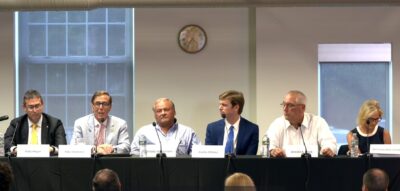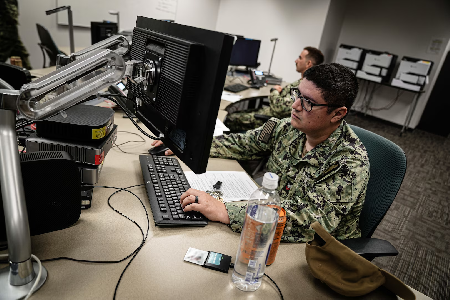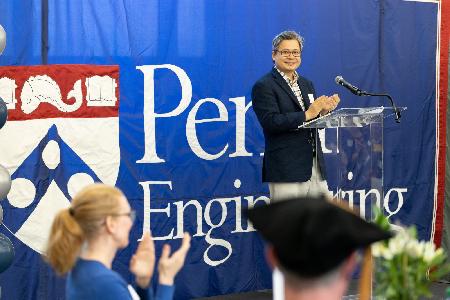When a tech founder sets out to build a company, there’s a number of ways they might consider it an eventual success.
Some might be thinking about possible exit deals the minute they start building, while others dream of building a tech empire to run forever. Philly’s tech scene’s founders run the gamut, with leaders who are building their third company, like Crossbeam’s Bob Moore or Common Paper’s Jake Stein, while others have been praised for staying the course and getting stronger on their own.
But in 2021, the US saw more exits than ever before, representing $774.1 billion in deals — a 168% increase from the year before, the latest PitchBook-NVCA Venture Monitor report shows.
So, how will you know if it’s time to make a deal and exit your company? That idea will look different depending on who you ask.
‘There’s no one answer’
Serial entrepreneur Alan Rihm, most recently the founder and CEO of cloud communications company CoreDial, has sold three of the four companies he’s founded. CoreDial, which was based in Blue Bell and acquired by BCM One in November, was by far Rihm’s longest project, as he ran the company for 16 years before the sale last fall.
Rihm immediately stepped away from the company, handing leadership responsibilities totally over to the new team. It’s not move not all exiting founders make. But it’s the easiest way for employees to go through the transition, he told Technical.ly, and provides clarity of who’s in charge.
If a founder is thinking about an exit, Rihm said, they should ask themselves questions like, why did I start this business? What will the payback for all my time and energy look like? What’s going on in the market right now? What could I be doing over the next two or three years that would make it more valuable?
In a perfect world, you don't have to think about it a lot. The phone should ring.
“Is it time? Yes, I think that’s a question every entrepreneur asks themselves, but there’s no one answer,” Rihm said.
Ideally, a founder would be heads down, driving the business to be disruptive, and filling a gap in a market, he said. Ultimately, people will notice.
“In a perfect world, you don’t have to think about it a lot,” Rihm said. “The phone should ring.”
Whether it’s time to answer the call is up to them. With CoreDial, the founder said, they’d had multiple phases of inbound interest, and the market was pretty hot. They’d made a lot of improvements to the company, and the business was accelerating. But the growth rate was decelerating. BCM wasn’t the first to inquire, Rihm said, but it “felt like a good fit” after acquiring other assets in the market.
A lot has changed since he started his first internet service provider in the 90s, Rihm said.
“You could write a business plan on a napkin and get it funded,” he said. But now, you have to run your the business like you’ll have it forever, “because you may have to.”
‘I’m here to build a business’
The phone has rung plenty of times for Seer Interactive founder Wil Reynolds, but he has no plans on picking up.
The company will celebrate its 20th anniversary this year, and it was famously founded to be the type of company Reynolds always wanted to work within. It has established unique operational practices over the years like not using job titles for a time, being fully transparent about its financial health, and in 2020, establishing a fund to support the families of Seer employees during the coronavirus pandemic. All of that is central to why Reynolds has no plans to sell.
I see Seer as a vessel to do good. And if I sold it, I would have no vessel to show people this is possible.
“If I sold this company, it would be somebody else’s hands. I do some pretty crazy things for our team and community, and that would no longer be around,” he told Technical.ly. “I see Seer as a vessel to do good. And if I sold it, I would have no vessel to show people this is possible.”
Reynolds said he’s never really thought about an exit, even though offers inevitably start coming for tech companies once they hit $10 million in annual recurring revenue. He understands the desire — raising venture capital and exiting a company can feed validating. If you have investors, that’s another factor to keep in mind and people to keep happy.
There’s nothing wrong with that cycle, Reynolds said, but he wants to be an example of an alternative path. He’s reminded of it on runs around Northern Liberties, where he lives with his family and where Seer was built and grown: People used to etch their names onto buildings, and business felt more permanent.
“People knew you were part of the community. Etching your name was a statement,” Reynolds said. “I’m here to build a business. I think people are now here to get exits, and it’s validating to raise money and get an exit, especially if you don’t have fire in it anymore or if you have investors. But I always say — think about weddings. We spend all this money, celebrating someone getting married, but we do not call those people back in 10, 20, 30 years when they’re still married. The goal is to stay married, not get married.”
‘What is the impact?’
Founder-turned-investor Emily Foote now helps early-stage entrepreneurs through the type of decisions she had to make with her own venture. She launched edtech company Practice in 2011, after working as a teacher, and ultimately sold the company to Salt Lake City-based Instructure in 2017.
“When we started Practice — and this may sound naive, but — the goal was to make as large of an impact as possible,” Foote said. “My priority was impact, from the perspective of field development. And I didn’t know what the end would be goal would be, I didn’t have a clear number I wanted to get to, I was just concerned with, ‘How can we ensure this product will grow?'”
I didn't know what the end would be goal would be, I didn't have a clear number I wanted to get to.
The company had raised a Series A in 2016, and found its product market fit. It was gaining traction, and they were ready to “put gas” on the company and scale it, Foote said. Exiting wasn’t in the company’s short-term goals at the time, she said. In 2017, the team raised a bridge round to buy more runway for growth, and one of the companies they’d reached out to was Instructure. They weren’t in the position to invest at the time, she said, but a few months later, they came back with an offer to buy instead.
There were a few things to consider with the offer, Foote said. It would get their investors a good outcome, and there were a few different players in the space. To continue to capitalize on their growth, they’d likely have to raise again. Practice was pretty powerful, Foote said, but the team saw the world and market evolving and thought that the company could become one part of a larger solution. The idea that the deal could give the product a greater reach was one of the biggest deciding factors to sell.
Now, on the investor side as a principal at Osage Venture Partners, Foote walks founders through those same questions: What does the founder want? What was their goal coming in? Does it align with what the investor wants? What does the market look like? What’s the future? Can we get to a larger outcome? Do we sell now and everyone wins at a different level?
Her past experience as a founder brings her so close to where the entrepreneurs she works with are.
“I think I recognize there’s a lot of things you don’t just know, and one of the values I bring is I can help the entrepreneurs not feel foolish for asking basic things,” Foote said. “I’m not far enough removed that I don’t forget what it’s like to be there in their shoes asking those questions.”

This editorial article is a part of Startup Health Month of Technical.ly's 2022 editorial calendar.
Before you go...
Please consider supporting Technical.ly to keep our independent journalism strong. Unlike most business-focused media outlets, we don’t have a paywall. Instead, we count on your personal and organizational support.
Join our growing Slack community
Join 5,000 tech professionals and entrepreneurs in our community Slack today!

A new model for thinking about how to grow regional economies: the Innovation Ecosystem Stack

Delaware’s next governor will be an entrepreneur. Here’s why Matt Meyer thinks it matters.

Can the nation’s biggest cyber hub even handle Craiglist founder’s $100M security pledge?


